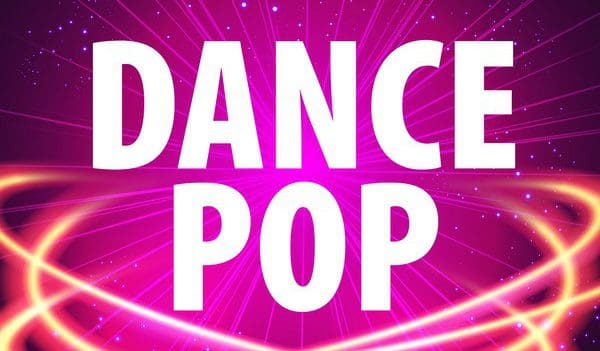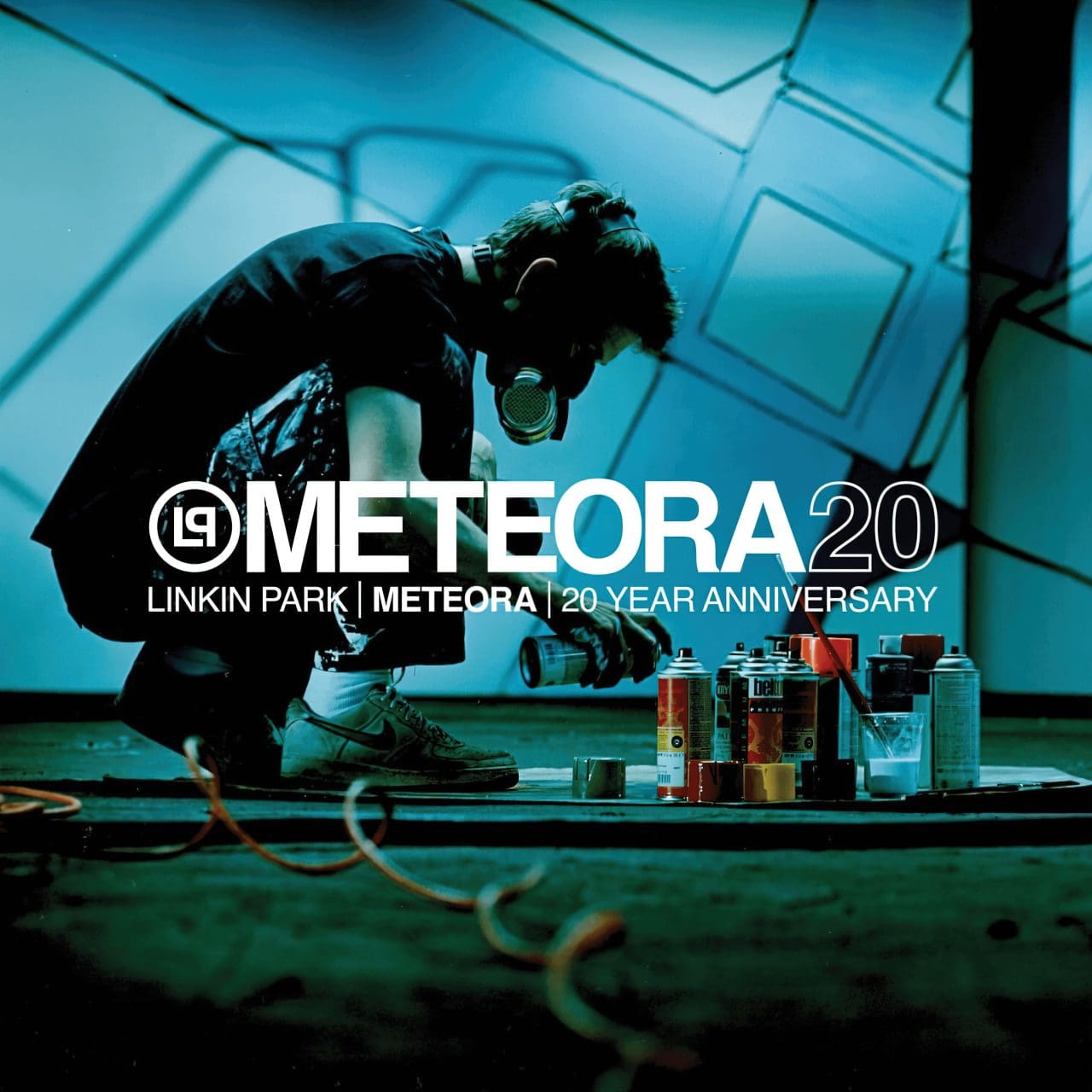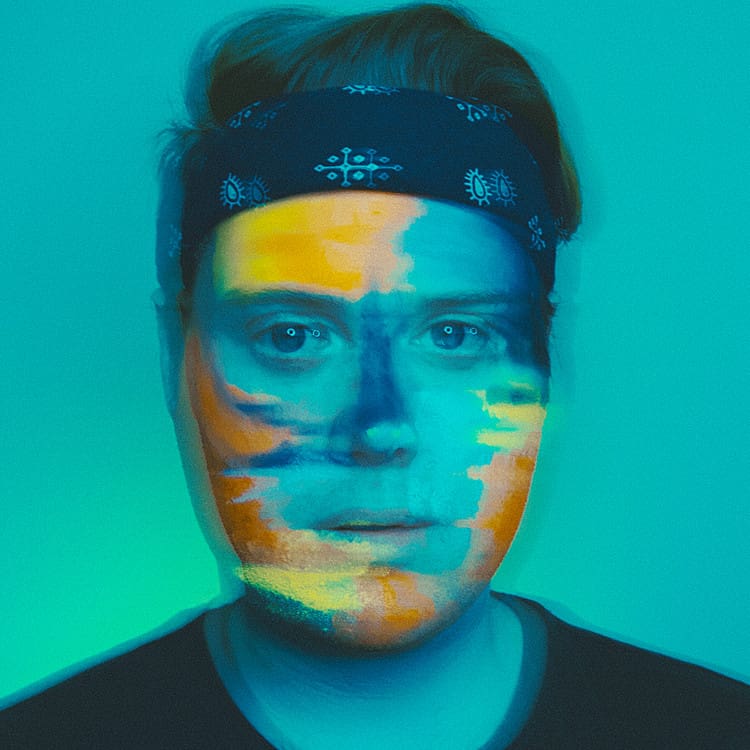Dance Pop music is a genre of electronic dance music that contains music suitable for nightclubs but is accessible enough to find its way onto pop radio. It is often very eclectic, incorporating elements from multiple genres such as R&B, Trance, Techno, House, Funk, and more.
The composition of the song itself is often the focal point rather than the vocals, the opposite of traditional pop music, which is driven by the lead singer(s). But disco it is not: modern forms of that genre is known as Nu-Disco.
1970s-80s: The Origins of Dance Pop
That’s not to say dance pop owes nothing to disco: that would be untrue. Dance pop music emerged in the early 80s in response to the waning popularity disco. More experimental than its predecessor and more electronic and synth-based, Dance Pop featured a more DJ-driven sound.
Disco made this possible: in the industry, before the mid-1970s, DJs were unknowns and found primarily on the radio. The rise of super DJs during the period, who were now often musically trained as well, began producing music on their own.
After disco’s downfall, some of these DJs including Larry Levan and Frankie Knuckles, went on to have massively successful producing careers.
Levan produced early dance pop hits such as “Ain’t Nothin’ Goin’ On But The Rent” by Gwen Guthrie and “Heartbeat” by Taana Gardner, while Knuckles is widely credited with pioneering modern house music, the successor to disco.
Vocalists who gravitated towards dance pop include George Michael and Wham, whose “Wake Me Up Before You Go-Go” is one of the most recognizable dance-pop songs of all time. Other artists during this time include Madonna, who helped further develop dance-pop into major commercial hits like “Holiday” (1983). Cyndi Lauper’s cover of Robert Hazard’s 1978 song “Girls Just Want to Have Fun” and Whitney Houston’s dance pop song called “I Wanna Dance With Somebody” (1987) are other notable examples.
Early dance pop was simple, but still more structured than traditional dance music. In addition, the music was aligned closely with other high-tempo electronic genres, such as Hi-NRG, also an offshoot of disco music.
1990s: “I Hear Disco’s Making a Comeback!”
Dance pop was a niche genre through much of the 1980s and early 1990s, as the industry largely bypassed acts that sounded too much like disco.
But those influences were about to make a big return. Despite its very public downfall, disco never really died, but rather faded into obscurity. Disco producers went underground, and a number of genres with direct disco influences, including Italo and Eurodisco, Hi-NRG, and the most successful, house, lived on.
As some of these acts — like Levan and Knuckles — gained cult followings, commercial music noticed. DJs were called on to remix popular songs, or as in the case of Levan and Knuckles, create music themselves.
As a result, dance pop became less experimental and more contemporary, with artists, DJs, and producers willing to build their entire sound around the genre. One group able to make this jump during the period was New York City-based Deee-Lite.
Deee-Lite, initially comprised of lead singer Lady Miss Kier, Ukraine-born Supa DJ Dmitry, and later Korean-Japanese Jungle DJ Towa Tei, formed in the mid 1980s during those “underground” years. The groups sound was unapologetically retro, fusing elements of disco, funk, techo, house, and other dance genres. Their look was too, and Elektra noticed.
The band’s 1990 release “Groove Is in the Heart” can arguably be called the birth of modern dance-pop. Featuring the band as well as Bootsy Collins and A Tribe Called Quest’s Q-Tip, the song and the band’s disco-inspired style heralded a new era of danceable pop.
Disco also saw a bit of a kitsch comeback during the decade, with its beats sampled in a variety of hip-hop, rap, and dance acts. Those alive during the time may also remember the 1990s “Disco Fever” CD infomercial boldly declaring disco’s return.
Club-friendly acts like Britney Spears, Ace of Base, Spice Girls, and others all dominated pop radio charts during the decade. While the early 90s iteration of the genre borrowed influences from R&B, House, and New Jack Swing, more elements of electronica began to creep in steadily into dance music later in the decade, making electronica very popular in mainstream pop.
1990s-2000s: Dance Pop Meets Rave Culture
Dance music’s new found popularity sent the industry running for the underground once again. As before, labels and producers again poached talent from the nightclub scene. However, this time it wasn’t discos where labels were finding acts, but the growing underground rave culture. House, trance (house’s higher tempo cousin), and techno artists found popular success this time.
It could also be argued that dance pop returned once again to its experimental and producer-centric roots during this period. Trance DJs Paul Oakenfold and Paul Van Dyk are credited with many popular dance pop remixes and songs during this period, as are house DJs Armand Van Helden and Danny Teneglia, among others.
But rave culture, like disco, was a victim of its own success. Parties that may have been attended by a few dozen in the 1990s were now attended by thousands. As a result, the more seedier elements of these events — the illicit drug use — became widespread.
This obviously attracted media attention, including from then Delaware Senator Joe Biden, who advocated banning the events and jailing the promoters. While Sen. Biden’s rather extreme position on the matter received pushback even from those concerned with the rise of the parties in their districts and communities, there was near unanimous agreement that something needed to be done. Thus, Biden and others worked on a watered down version of Biden’s early recommendations.
However, the watered down version was equally damaging. Initally called the Reducing Americans’ Vulnerability to Ecstasy (RAVE) Act, it later became the Illicit Drug Anti-Proliferation Act of 2003. In it, the definition of the “establishment of manufacturing operations” to include both temporary and permanent uses of a location.
The legislation had the immediate effect of making every “rave” — or at least how they were held at the time illegal. But the damage was already done: state and local governments had already been moving to curb these parties, and the IDAPA just formalized it.
You are probably asking at this point what President Biden, the RAVE/IDAPA, and underground parties have anything to do with dance pop. Well, like the death of disco, promoters and DJs again needed to find ways to make money as these events were forced underground once more, making them commercially unviable.
Some of the most notable names, like Oakenfold and Van Dyk, again found success in shifting their focus to popular music.
(Editor’s note: We want to stress that including President Biden in this story is not in any way to criticize or opinionate on his actions. However, then Sen. Biden’s role in evolution of popular dance music cannot be understated.)
Mid 2000s onward: Dance pop returns to its disco roots
While Spotify made a big deal about dance pop back in 2021, its modern roots go much further back to the early and mid 2000s. Kylie Minogue’s “Can’t Get You Out of My Head” became a smash hit in the early 2000s. Madonna, herself a pioneer of dance pop, would help return the genre to its disco roots with Confessions on A Dance Floor in 2005 containing elements of Euro Disco. Her lead single from “Hung Up” sampled ABBA’s 1979 classic “Gimme, Gimme, Gimme! (A Man After Midnight)”.
More recently, in the 2010s and 2020s, there’s been a continued interest in dance pop music with artists such as Carly Rae Jepsen, Justin Bieber, Selena Gomez, Lady Gaga, and Katy Perry finding chart success.
Prominent Dance Pop Artists
Madonna
Madonna has been credited with popularizing dance pop music and has had several hit songs over the years. Some of her most famous tracks include “Material Girl,” “Like a Prayer,” “Vogue,” and “Like A Virgin,” and “Hung Up.” The female dance pop vocalist is also well-known for her stage performances, which often incorporate provocative visuals and themes.
Cher
Cher, “The Goddess of Pop,” is a dance music icon, and rightfully so. Recognizable for her unique contralto singing voice, Cher is still wowing crowds with her singing voice well into her 70s. Achieving a number one single with her duet with Sonny Bono, “I Got You, Babe,” Cher continued to rise in popularity throughout the decades. Cher would go on to release hits such as “Gypsies, Tramps & Thieves,” “Dark Lady,” and “If I Could Turn Back Time.”, exploring many different genres. However, Cher’s most notable hit was her famous contribution to Dance Pop, the smash hit “Believe” (1999), widely credited for introducing autotune to the masses.
Janet Jackson
Janet Jackson is one of the most successful artists in history, with over 100 million records sold worldwide. Some of Janet Jackson’s most famous songs include “What Have You Done For Me Lately?” “Control,” and “Nasty.”
Michael Jackson
Success must run in the family, as the late Michael Jackson is the most successful dance pop musician with over 1 Billion records sold worldwide. An enigma in pop music, he was known for his innovative music, dance moves, and stage performances. Michael’s eccentric personal life lead him to become a darling of the paparazzi, with Michael’s name almost always in the tabloids throughout his lifetime. His hits include songs like “Bad,” “Billie Jean,” and “Thriller.”
Cyndi Lauper
Cyndi Lauper is an American singer, actress, and LGBT activist. Her debut album “She’s So Unusual” (1983) was a significant success and yielded four top-five singles on the Billboard Hot 100, including the number-one hit “Girls Just Want to Have Fun.” This was a first for a female pop artist at the time.
Kylie Minogue
Kylie Minogue is an Australian singer and the highest-selling Australian artist of all time. She first achieved fame in the late 1980s with “Locomotion.” Since then, she has had several successful albums and singles. Some of her most famous songs include “Can’t Get You Out of My Head,” “Spinning Around,” and “Locomotion.”
Ace of Base
Ace of Base is a Swedish pop group, who rose to international fame in the 1990s with their debut album “The Sign,” which yielded the hit singles “All That She Wants,” “The Sign,” and “Don’t Turn Around.”
Spice Girls
The Spice Girls is a British pop girl group formed in 1994. Initially composed of Emma Bunton, Geri Halliwell, Mel B, Melanie C, and Victoria Beckham, they had their first UK number one hit with “Wannabe” in 1996. Shortly after this, they released their second album “Spiceworld.” It was followed by their third album, “Forever,” which has sold more than four million copies worldwide.
Britney Spears
Britney Spears is another big name in dance pop who started her career in the late 1990s. Her debut single “…Baby One More Time” (1999) was an instant hit and reached number one in multiple countries. She would go on to have many other successful singles like “Oops!… I Did It Again” (2000), “I’m a Slave For You” (2001), “Toxic” (2004), which all ranked high on Dance charts worldwide.
Lady Gaga
Lady Gaga is an American singer, songwriter, and actress. She first broke through a solo artist in 2008 with her first album, “The Fame” (later reissued as The Fame Monster). This album contained a series of dance pop tracks well received by critics and fans alike.
Gaga has since released other albums that have performed well on the Billboard charts, including “Born This Way” (2011). While her popularity fluctuated over the years, her performance on A Star is Born reinvigorated her career with the smash hit “Shallow.”
Katy Perry
Katy Perry is another pop star who rose to fame in the late 2000s with her hit singles “I Kissed a Girl” (2008), “California Gurls” (2010), and Teenage Dream,” which all made it on top of dance charts.
Perry’s first album was named after her birth name (Katy Hudson), but from there, she reinvented herself into the pop star she is today. She has since released many other albums like “One of the Boys” (2008), “Teenage Dream” (2010), “Prism “(2013).” Witness “(2017), and Smile (2020).
Ariana Grande
While Ariana first began her musical career at 15 on Broadway, Ariana Grande first came to fame in 2013 when she played the role of Cat Valentine on the Nickelodeon show “Victorious.”
She would later obtain a record deal due to covers of hers being discovered by executives on YouTube, and from there, it was history. In 2013, Grande released her first studio album, “Yours Truly,” which debuted at number one on the US Billboard 200 chart. The album contained “The Way” and “Baby I,” which reached number 9 and number 21, respectively. Grande’s second studio album, “My Everything” (2014), also reached number one in the United States. It spawned the hit singles “Love Me Harder,” “Bang Bang,” and “One Last Time.” Ariana has continued to dominate the pop charts ever since.
Our Picks for the Best Dance Pop Songs of All Time
While there are thousands of dance pop songs, the following tracks stood out the most to AltWire staff.
“Can’t Get You Out of My Head” – Kylie Minogue
This song was a worldwide number-one hit in 2001, reaching top honors in 40 countries. It became Minoque’s first top ten single in 13 years in the US and was inescapable in 2001. It’s a catchy tune that will get stuck in your head for days, and it’s definitely dance-pop at its best.
“Wannabe” – Spice Girls
This song was the group’s debut single and reached number one in several countries, making it one of the most successful dance-pop songs of the 1990s. So, if you want to hear some classic girl power, this is the song for you!
“Toxic” – Britney Spears
In 2004, Spears released her fourth studio album, “In The Zone,” containing “Toxic.” This is one of Britney’s best with an iconic sampled string section.
“Bad Romance” – Lady Gaga
Released in 2009 as the lead single from Gaga’s third EP, “The Fame Monster.” With a unique, theatrical music video and dynamic dance beats, this song is one of Lady Gaga’s biggest hits.
“Believe” – Cher
This song was released in 1998 as the lead single from Cher’s twenty-second studio album “Believe.” The dance-pop hit exploded upon release. It was notable for its pioneering use of autotune. While some use the effect to pitch correct imperfect performances, Cher used it for special effects (not to cover up an inability to hit higher notes, as was rumored at the time), making a vocal effect unlike anything else, and has been imitated often since, most recently by Post Malone.
“I Wanna Dance With Somebody” – Whitney Houston
This song was released in 1987 as the lead single from Houston’s second studio album “Whitney.” It quickly became a worldwide hit and remained one of Whitney Houston’s most iconic tracks. With its upbeat rhythm and powerful vocals, it’s no wonder this song is still so popular today.
“Wake Me Up Before You Go-Go” – Wham!
Released in 1984 as the lead single from Wham! ‘s second studio album, “Make It Big.” With its instantly recognizable “j-j-j-j-jitterbug!” intro, this song is a must-listen for any dance-pop enthusiast. It’s one of George Michael’s most iconic songs.
Conclusion
If you were looking to learn more about dance pop or dance music, we hope this article gave you a good start. Have any questions, or think we missed something? Let us know in the comments!


















